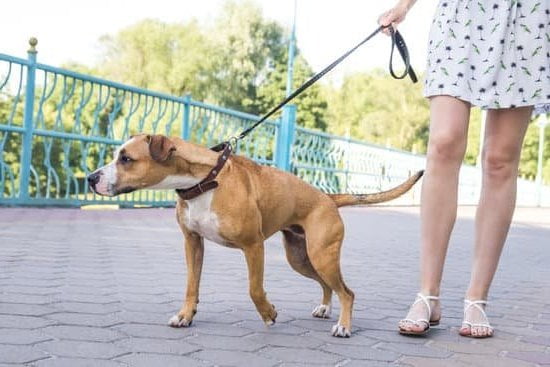Are you wondering how to train dogs not to attack snakes? It is crucial for dog owners to understand the dangers of dogs encountering and attacking snakes. This article will provide valuable information on how to protect your furry friend from snake encounters and prevent potentially deadly situations.
Dogs attacking snakes can lead to serious consequences, including venomous snake bites and harm to both the dog and the snake. Understanding the risks associated with these encounters is essential for ensuring the safety of your canine companion. By recognizing the potential dangers, dog owners can take proactive steps to prevent harmful interactions between their pets and snakes.
In this article, we will explore effective training methods and techniques that can help dogs recognize and avoid snakes, ultimately reducing the risk of dangerous confrontations. From scent training to positive reinforcement, we will discuss various approaches that can be utilized to train dogs not to attack snakes. Additionally, we will provide tips for creating a safe environment for your dog in snake-prone areas and monitoring their progress in avoiding snake encounters.
Identifying the Signs of a Snake Encounter
Dogs naturally have an instinct to chase and attack small, fast-moving creatures, including snakes. However, this behavior can be extremely dangerous and potentially life-threatening if the snake is venomous. It is important for dog owners to understand the signs of a potential snake encounter in order to prevent such incidents from occurring.
One of the first signs of a potential snake encounter is a change in your dog’s behavior. If your dog suddenly becomes alert, stops in its tracks, or starts sniffing and showing signs of agitation, there may be a snake nearby. Additionally, if you notice your dog pawing at or digging in a specific area, it could indicate that they have encountered a snake or its scent.
Another key sign of a possible snake encounter is the presence of a snake’s shed skin. If you come across shed skin in your yard or on walking trails where you take your dog, it is important to be extra cautious and aware of the potential for encountering snakes in those areas.
In order to protect dogs from dangerous encounters with snakes, it is crucial for owners to be able to identify these signs and take proactive measures to prevent their pets from engaging with snakes. By recognizing these warning signals early on, owners can take steps towards training their dogs not to attack snakes and creating a safe environment for them. This includes implementing scent training, desensitization techniques, and positive reinforcement to prevent dog-snake incidents altogether.
Introducing Scent Training to Teach Dogs to Recognize and Avoid Snakes
Understanding Scent Training
Scent training involves exposing dogs to the unique odor of snakes, helping them develop an association between the scent and potential danger. This can be achieved through the use of real snake shed skins or commercially available snake scent products. Owners can gradually introduce these scents to their dogs in a controlled environment to initiate the training process.
The Importance of Scent Training
By teaching dogs to recognize the specific scent of snakes, owners empower their pets with the ability to identify potential threats before they escalate into dangerous encounters. This preventative measure is crucial for the safety of both dogs and their owners, especially in areas where venomous snakes are prevalent.
Training Techniques
When introducing scent training for snake recognition, it is important to use positive reinforcement techniques such as praise, treats, and playtime. This encourages dogs to associate the detection of snake scent with a positive outcome, reinforcing their natural instinct to avoid these reptiles. Consistent repetition and patience are key factors in successfully incorporating scent training into a dog’s routine.
Overall, incorporating scent training into a comprehensive approach on how to train dogs not to attack snakes is an effective way to help protect canine companions from potentially dangerous encounters with these reptiles. By utilizing this method alongside other preventative measures, owners can minimize the risk of dog-snake incidents in snake-prone environments.
The Role of Positive Reinforcement in Training Dogs Not to Attack Snakes
Dogs are naturally curious and protective animals, and their encounters with snakes can lead to dangerous consequences. In order to prevent dog-snake incidents, it is important for pet owners to understand the role of positive reinforcement in training dogs not to attack snakes.
One effective method for training dogs not to attack snakes is through scent training. By introducing dogs to the scent of different types of snakes, they can learn to recognize and avoid them. This can be achieved by using snake-scented objects or enlisting the help of professional trainers who specialize in scent training.
In addition to scent training, positive reinforcement plays a crucial role in teaching dogs how to behave around snakes. When a dog shows signs of avoiding a snake or responds appropriately during a simulated encounter, it is important for pet owners to reward them with treats, praise, or affection. This helps reinforce the desired behavior and encourages the dog to continue avoiding snakes in the future.
| Training Method | Effectiveness |
|---|---|
| Scent Training | High |
| Positive Reinforcement | Crucial |
Utilizing Visual Aids and Simulations to Desensitize Dogs to Snakes
Dogs, by nature, can be curious and territorial animals. This can lead to dangerous encounters with snakes, which can result in fatal consequences for the dog. Utilizing visual aids and simulations can be an effective way to desensitize dogs to snakes and prevent potential attacks.
Understanding the Importance of Desensitization
Desensitization is a process that involves exposing dogs to visual representations or simulations of snakes in a controlled and safe environment. The goal of desensitization is to reduce the dog’s fear or aggressive response towards snakes, ultimately teaching them to remain calm and avoid confrontation.
Using Visual Aids and Simulations
Visual aids such as pictures, videos, or even life-like snake models can be used to familiarize dogs with the appearance of snakes. These visual aids should be presented in a controlled and gradual manner, starting with less threatening images or objects before progressing to more realistic representations.
Implementing Controlled Simulations
Simulating encounters with snakes in a controlled environment can help acclimate dogs to the presence of snakes without exposing them to actual danger. This can involve using remote-controlled snake toys or enlisting the help of professional trainers who can safely guide the dog through simulated snake encounters.
By utilizing visual aids and simulations as part of their training regimen, dog owners can effectively desensitize their pets to the sight of snakes, reducing the risk of potentially dangerous encounters. Combining these techniques with positive reinforcement and proper training methods can significantly decrease the likelihood of dogs attacking snakes.
Training Techniques for Teaching Dogs to Respond to Snake Encounters
When it comes to dog training, especially in snake-prone areas, it is crucial to teach dogs how to respond when encountering a snake. This not only keeps the dogs safe but also prevents any potential harm to the snakes. Here are some effective training techniques for teaching dogs how to respond to snake encounters:
1. Start with obedience training: Before introducing specific snake encounter training, ensure that your dog has a strong foundation in obedience training. This includes commands such as “sit,” “stay,” and “come,” which will be essential in controlling your dog’s behavior during a snake encounter.
2. Scent training: Introduce your dog to the scent of snakes using controlled methods, such as using shed snake skins or scent samples. Pair the scent with a negative stimulus, such as a loud noise or a non-harmful but unpleasant sensation, to create an aversion response towards the scent.
3. Positive reinforcement: Use positive reinforcement techniques to reward your dog for displaying the desired behavior during encounters with the snake scent. This can include treats, praise, or playtime as a reward for successfully avoiding the scent or reacting appropriately.
4. Desensitization through visual aids: Utilize visual aids such as lifelike rubber snakes or videos of moving snakes to desensitize your dog to the sight of snakes. Gradually expose your dog to these visual aids while reinforcing positive behavior and reactions.
5. Realistic simulations: Create realistic simulations of snake encounters by using professional trainers or experts who can safely introduce controlled snake encounters to teach your dog how to react appropriately without putting them in danger.
By implementing these training techniques, dog owners can effectively teach their pets how to recognize and avoid potentially dangerous encounters with snakes while creating a safe environment for both dogs and wildlife.
Creating a Safe Environment for Dogs in Snake-Prone Areas
Living in areas where snakes are common can pose a significant risk to dogs, as their natural instinct may be to attack or confront snakes when encountering them. It is crucial for dog owners to take proactive measures in creating a safe environment for their pets in snake-prone areas. By understanding the dangers of dogs attacking snakes and implementing effective training techniques, owners can help reduce the risk of potentially life-threatening encounters.
One important aspect of creating a safe environment for dogs in snake-prone areas is to train them not to attack snakes. This can be achieved through scent training, which involves introducing the scent of snakes to the dogs in a controlled and safe manner. By associating the scent with negative consequences or discomfort, such as a loud noise or an unpleasant taste, dogs can learn to recognize and avoid the scent of snakes.
Positive reinforcement also plays a crucial role in training dogs not to attack snakes. This involves rewarding the dog for displaying calm and non-confrontational behavior towards simulated or real snake encounters.
By offering treats, praise, or toys when the dog successfully avoids engaging with a snake, they will learn to associate this behavior with positive outcomes. These training techniques are essential in teaching dogs how to respond appropriately when encountering snakes, ultimately creating a safer environment for them in snake-prone areas.
Monitoring Progress and Reinforcing Training to Prevent Dog-Snake Incidents
In conclusion, training dogs not to attack snakes is a crucial responsibility for pet owners, especially those living in snake-prone areas. Understanding the dangers of dog-snake encounters and learning to identify the signs of a potential encounter are essential first steps in this process. Introducing scent training, positive reinforcement, visual aids, and simulations can help desensitize dogs to snakes and teach them to recognize and avoid these potentially deadly reptiles.
Positive reinforcement plays a significant role in training dogs not to attack snakes. Rewarding desired behaviors with treats or praise can encourage dogs to remember their training and react appropriately when faced with a snake. Similarly, utilizing visual aids and simulations such as snake-shaped toys or videos can help desensitize dogs to the sight of snakes, reducing the likelihood of an aggressive response.
Creating a safe environment for dogs in snake-prone areas is also key to preventing dog-snake incidents. This may involve removing attractants such as food sources for snakes, securing outdoor spaces where encounters are more likely to occur, and remaining vigilant when walking or hiking with your pet. By monitoring progress and consistently reinforcing their training, pet owners can greatly reduce the risk of dog-snake incidents and ensure the safety of their beloved companions.

Welcome to the blog! I am a professional dog trainer and have been working with dogs for many years. In this blog, I will be discussing various topics related to dog training, including tips, tricks, and advice. I hope you find this information helpful and informative. Thanks for reading!





